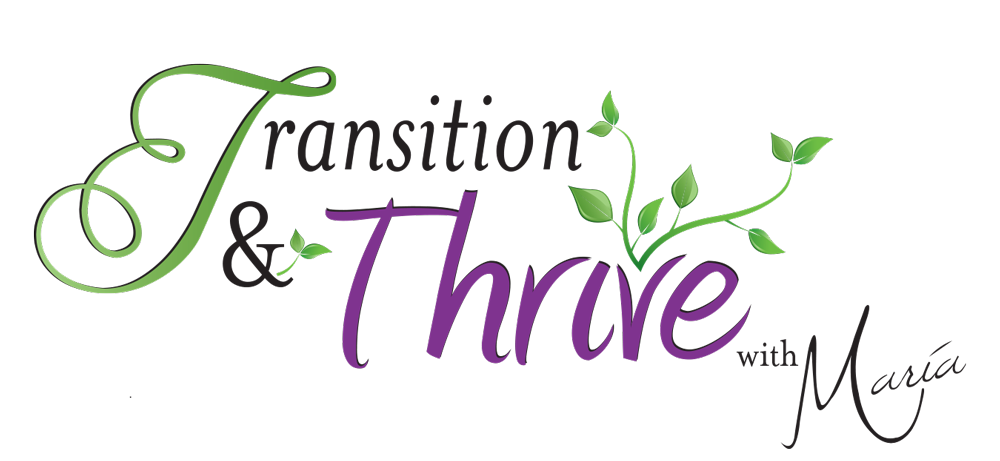Who hasn’t felt stuck, stressed or worried? There are so many reasons you might feel that way — each one unique to you and your circumstance.
It might be caused by the clutter in the rooms of your life—the office, the kitchen, your mind. It’s hard to think clearly, make good decisions, and move forward when you’re surrounded by clutter.
When you create more space, new ideas, perspectives and solutions can come to you—make room in your life so you can breathe and feel more in control. Let your life work FOR you. Let go of the stress and worry and move beyond the stuck-ness.
You Are Not Alone
As I reflect on my own experiences and listen to those of my clients, colleagues, friends and family, we’ve all been in the same boat at one time or another. But, how do we move through and beyond it?
One way to curb the feelings of being stuck, stressed and worried is to get organized—in every area of your life: career, home, relationships with family, friends and, most importantly, yourself.
One way to get organized is to follow these six simple steps. Acknowledge. Identify. Refine. Mitigate. Take Action. Accountability. The steps are simple. The stuff you have to think through—the clutter—maybe not so much.
When you apply these practices to each area of your life and each thing that’s got you stuck, stressed and worried, you can begin to relieve those feelings and find clarity to move forward.
Step One — Acknowledge
Acknowledge the fact that you are stuck, stressed or worried. The first thing you can do is sit quietly, breathe deeply and relax. Try to put distractions aside for a few minutes. Then think about how you’re feeling and face the fact that something is going on and you want to change how you’re reacting to it. Which is it for you?
Are you stuck in one place and can’t seem to get out of your own way? Have circumstances left you feeling unconfident, unfulfilled or ineffective? Do you want to get past these feelings, but you don’t know how? That’s one of the definitions of being stuck.
Does something (or do many things) have you stressed? Are you in a situation that feels out of your control? Are you finding it hard to make ends meet? Are there relationships that have you constantly on edge? Stress comes in all shapes and sizes—and from all directions.
For some, worry is ever-present. Are you a worry-wart? Do you worry about being good enough? Or smart enough? Or that you can make it on your own? Or that you’ll make the right decisions? If you’re lucky, you don’t worry about everything, but you do worry about some things.
Take stock of what it is for you. Face it squarely. Sometimes we can be all those things: stuck, stressed AND worried. If that’s the case for you, it’s okay. Remember, you are not alone. And there are simple steps you can take to help get you un-stuck, un-stressed and un-worried. Read on.
Step Two — Identify
What is it exactly that’s got you stuck, stressed or worried? After you face that fact that you are having one or all those feelings, now is the time to identify what it is that’s got you feeling that way. Pick THE most important thing that’s got you under its thumb. There may be many things but, rather than trying to tackle them all at once, choose the one that is most concerning to you right now. Write it down on a piece of paper. The biggest concern.
Be very specific as you describe that most urgent thing on your mind. For instance, you might be worried about changing jobs or stressed about being able to afford something you need or stuck feeling unconfident that you can make it on your own after your divorce.
Sit quietly and decide which of the things that concern you is THE most urgent to address. Don’t worry about all the other things right now. This exercise can be used at any time. Practice first on the most important one, and you can put any others through the same process later. The key is to be very specific as you go through this exercise.
Step Three — Refine
What is it about that important issue which causes you to feel stuck, stressed or worried? Here you’ll start to refine your most important concern. Write down the specific things about your problem that have your head spinning.
Let’s take the example of feeling worried about changing jobs — a client is going through this right now and I was coaching her to define what about her situation had her worried. She identified these specific things: losing her benefits, reduction in salary, what if her new job doesn’t pan out, and losing the security of being with a larger company.
What are the specific things about the situation you chose to focus on that make you feel stuck, stressed or worried? Put pen to paper and start writing about them. Be as detailed as you can.
Step Four — Mitigate
What can you do about each thing to lessen the feeling of being stuck, stressed or worried? Now take each cause of your feeling and think about what you can do to make it feel less stressful or worrisome.
Back to the example of my client who was worried about changing her job. When I asked her what she could do to worry less about losing her benefits, she decided that she could schedule all her annual checkups before she leaves, so she has a bit of time to research and decide about new insurance.
When we talked about the reduction of salary, she said that she could expand the number of groups she will coach in the new job to increase her income.
Then we talked through her concern about the new venture not working out as she hoped — for this, she decided to do both jobs for a while, even though that would be a stretch for her. This would allow her to see how the group coaching is working out before she decides on a date to leave her full-time job.
The last thing that worried her was the loss of security with a large company — for this she decided that if the other things work out for her, then she’ll be much happier having more control over her time and she’ll be doing something she’s passionate about, which would mitigate this worry completely.
Can you see how this works? The idea is to get very specific about what concerns you, refine it with more specifics then think about some practical steps you can take that will ease the feeling of being stuck, stressed or worried. Make sense so far? Let’s talk about taking those steps now …
Step Five — Take Action
What action plan feels right to you? This step is very important — without it, you just have a list of things that keep you stuck, stressed or worried. Who wants to stay there?
If you don’t take this step, it’s unlikely you’ll never move beyond the things that concern you. It’s time to take some inspired action.
What small steps can you think of that will help you to lessen your worry? You may very well have heard about creating SMART Goals, with SMART being an acronym. I believe you can also create SMART Actions, following the same model.
What if you thought about describing these steps in S.M.A.R.T. terms?
S = Specific — a very specific step or goal; small steps are better than giant leaps; small steps are easier to course-correct if they take you in the wrong direction; taking many small steps can reap greater satisfaction when you check them off your list.
M = Measurable — a step or goal that can be counted, e.g., call 3 people to help you do something.
A = Achievable — a step that is within your reach to accomplish; that you have the skills to do or that you can enlist the help of another to achieve.
R = Realistic — a step that is doable within your realm of possibility; e.g., I want to sing karaoke locally to meet more people versus I want to get a million–dollar recording contract to sing to the world.
T = Time-limited — set a completion date for each step so you don’t procrastinate, and you can feel the momentum of getting things done to lessen the stuck-ness, stress or worry.
Again, using the example of my client: She wanted to schedule her annual appointments before leaving her full-time job: She listed each appointment specifically (S), there were 4 of them (M), each of these steps were pretty easy to accomplish (A), they were all within her realm of possibility to do (R) and she decided to have all of them completed by the end of February (T).
I hope you can see that this is a simple way to make sure you’re not setting yourself up to fail and that you can hold yourself accountable to get those things done in the way and timeframe you mapped out. Which leads me to the final step …
Step Six — Accountability
What will you do to ensure you keep moving forward, so you create some positive momentum for yourself? Accomplishing small action steps toward a larger goal is one of the best ways I know of to feel good. Confidence comes with action. When you’re doing something that makes you feel better, that creates a positive energy around you, that lifts your spirits and makes you smile, the feelings of being stuck, stressed or worried start to diminish.
It helps to have someone who will agree to be your accountability partner. Many times that can be a friend who understands exactly where you are and what you’re trying to do. For others that may be a counselor or a coach, when a more objective partner is needed.
Regardless of who it is for you, reach out for the support so you can share your goals and make sure they are SMART for you. Then, you can share your roadblocks and get help to overcome them. And most importantly, you can share your accomplishments, celebrate your successes and move forward to create new goals as your journey continues.
These are six simple steps to address being stuck, stressed or worried.
These steps can be applied at any time in many situations. What I call “A Tool for Your Treasure Chest.” A tool for life. Are you ready to give it a try?
If taking action and accountability are your downfall, and you’d like some help to get this plan started, schedule a complimentary chat with María. Complete the form and let her know what’s got you stuck, stressed or worried. She can help you create your plan and get you off to a great start.
Step Onto Your Bridge
When life-changing moments flip your world upside down, I create a bridge so you can turn chaos into calm. You build resilience and learn to live a life guided by your own values and vision. Are you ready to take the first step onto your bridge? Do you want to explore how change can impact you? Would you like to learn how to move through it with more dignity and grace? I’m here to help. Get my free ebook From Darkness to Light: Learning to Adapt to Change and Move Through Transition.

